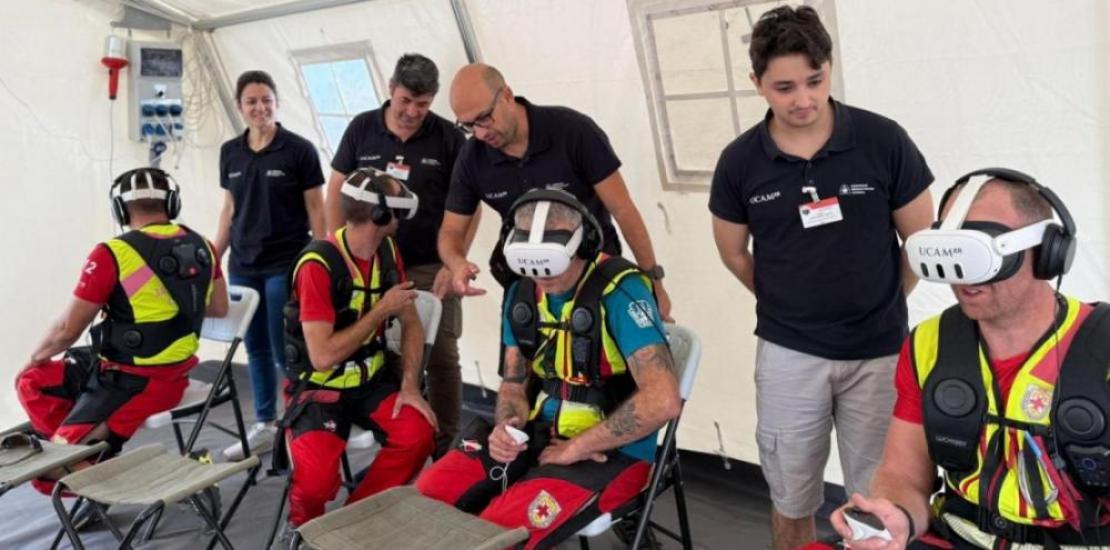UCAM deploys its immersive technology in NATO emergency management exercises
UCAM, the only Spanish university selected by the Atlantic Alliance's EADRCC, is actively participating in the international NATO BULGARIA 2025 exercise.
The UCAM Research Group in New Health Technologies is working on the international emergency management exercise NATO BULGARIA 2025, which is being held this week in the city of Montana (Bulgaria). This initiative, organised by the Euro-Atlantic Disaster Response Coordination Centre (EADRCC), brings together scientific and technological teams from allied countries, and UCAM is the only Spanish university selected.
During these manoeuvres, the team led by Professor Manuel Pardo is applying technological solutions based on virtual reality, digital twins and neuroscience to train first responders in disaster scenarios. These tools, developed within the framework of the METASALUD project (funded by the Spanish Ministry of Science, Innovation and Universities), are being tested in real operating conditions, in direct collaboration with international emergency professionals.
‘We are validating the systems we designed to improve preparedness for natural disasters or hybrid threats in an international environment,’ explains Pardo. The researcher emphasises that this participation allows the scientific knowledge developed at the University to be applied ‘with real rescue personnel in complex scenarios,’ offering a unique opportunity for technology transfer.
The UCAM research group was chosen based on its solid track record in the application of disaster management technology, endorsed by its participation in real disasters such as the earthquakes in Turkey and Syria, where they developed 3D replicas and digital twins of damaged infrastructure. Added to this experience is the creation of high-fidelity virtual scenarios to train elite forces and healthcare professionals in critical situations, consolidating the confidence of NATO in its ability to provide cutting-edge technological solutions.
In Bulgaria, they are evaluating the training impact of these technologies by collecting neurophysiological data, such as cognitive load, salivary alpha-amylase and brain activity through portable neuroimaging, as well as questionnaires and post-analysis sessions with participants. The aim is to measure how these immersive tools contribute to improving decision-making in high-stress operational situations, such as victim triage or intervention in contaminated or collapsed areas.
The UCAM technical team travelled to Bulgaria in advance to record the environments in which the exercise is now taking place using 360º cameras and LiDAR technology: destroyed chemical plants, flooded tunnels, collapsed buildings and underwater rescue scenarios, recreated with maximum fidelity. Participants interact with these environments using virtual reality glasses and haptic devices to ‘see, hear and feel’ the conditions of the simulated emergency.
According to Pardo, being part of this international initiative ‘is an example of how science cannot remain confined to laboratories; it must be at the service of those who make decisions in moments of extreme pressure’. In his opinion, this project consolidates UCAM and the Region of Murcia as a European benchmark in the application of advanced technology to disaster management, making a real contribution to scientific progress and improving international emergency preparedness.




